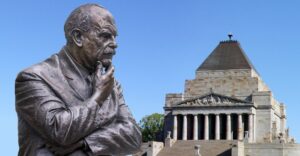What a crazy world we live in. The former Prime Minister, for no valid reason whatsoever, sequestered all the major portfolios to himself except, it seems, Defence. He presented himself as the Dad of Australia, or thought he did, to propel him to an unlikely win in the 2019 elections over one of the most unelectable men the Labor Party had ever produced. And boy, have the Labor Party produced a number to be bestowed with such a title.
The problem with the Pentecostals is that their religion casts them into an alternative world, and while they may project a façade of easy charm, underneath is their use of the Bible as a weapon – to be accepted literally, or else.
When the dust of the miracle election settled, then the rapture settled in – Morrison, the Instrument of God emerged. Having mingled in my youth with some of these characters, I know their affable countenance quickly changes when you question the validity of their beliefs. My mother was a creationist, and I found out that it was unwise to broach this subject with an otherwise gentle and caring mother.
Hence, I stop pondering on the Morrison condition, because I believe pursuit of its roots will lead me into some dark recesses of the human condition, where to go is only to entangle oneself in a pointless dialectic.
What is clear is that Morrison should leave Parliament as soon as possible. The Elder Howard worries that it will damage the Liberal Party. I would suggest that it is already damaged by the number of fellow religious travellers linked into the party branches and by keeping Morrison there, he will still be able to try and assert influence, the evangelical knee-jerk. Already these antics in social media just emphasise the powerlessness of the Liberal Party leadership and/or its total enmeshment in a form of theological fascism more associated with the European Roman Catholic Church previously.
Morrison in many ways could become the Liberal Party equivalent of the Vicar of Stiffkey (pronounced Stewkey) whose bizarre behaviour, quite different may I add from that of Morrison, ended his life as a fairground exhibit who met his Maker while being mauled by a circus tiger. An unfortunate exit for a figure of fun.
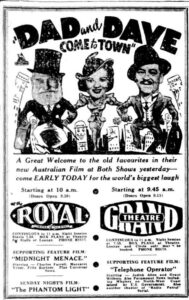

While he is in Parliament, the Labor Party would be loath to go after the current Governor-General, whose behaviour in apparently using his position to solicit funding, presumably by Prime Ministerial fiat, would appear completely beyond acceptable. Those who say that the Governor-General should by necessity be a judge or senior lawyer have short memories. Remember that inglorious tosspot, John Kerr.
While Ninian Stephen and William Deane, both eminent jurists, on the other hand were two superb Governors-General, one should not forget one of the most effective was Bill Hayden, once a Queensland copper and no dullard.
No trunk Route to the top of Mount Elephant
There is one advertisement shown on television which intrigues me. A young girl is seen driving a motorised billy cart up a grassy track towards a hill with a conical crown. To me it looks very much like Mount Elephant, which guards the small township of Derrinallum.
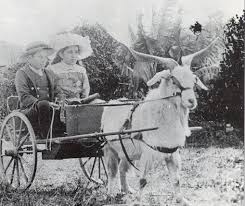
The vehicle stalls and there are two other images which remind me very much of the township, which I passed through countless times when we owned a property at Port Fairy in the Western District. The familiar image of the gravel road leading around the conical summit, which hides the old scoria quarry from the highway with the “mother” gesticulating to her “daughter” who by then has teamed up with another billy carter with a more technically advanced cart. The road looks suspiciously like one near Derrinallum, where the highway both runs uphill in a westerly direction and through the township divided by a treed median strip.
It is characteristic that around all these extinct volcanoes in the Victorian Western District there is always a settlement at the base. Some of these volcanos have been disfigured by quarrying for red scoria. Some, like Mount Shadwell which overlooks Mortlake, has yielded semi-precious green stone called olivine which, together with very good meat pies, was always on sale at Mortlake.
The Hamilton Highway is mostly very straight and lined by small townships and hamlets. It has always been a speedway, because police patrols were rare when I would drive the highway sometimes several times weekly. A former Premier of Victoria, Jeffrey Kennett, was pinged for speeding at a petrol pump called Berribank, so small is this hamlet. Then there was the horrendous crash when “the footie legend” Ron Barassi drove his Mercedes into a tree on the Western outskirts of another township, Lismore. His passenger was another famous Australian Rules footballer who was seriously injured. That accident occurred in the 1970s and the damaged tree stood for years as a survivor of excessive speed and the fact that trees don’t move out of the way.
But this is only background to what is the most significant reminder that Victoria has a convict heritage in that these stone walls at Derrinallum, made from volcanic basalt, were the product of convict labour. They are very observable being along the highway, half hidden in the grass, although there are places where the casual observer may stop and walk unimpeded to see and touch them. Apart from these honeycomb basalt walls just out of Derrinallum, there are 3,000 kilometres of these walls in the Western District, because the ancient lava flows left otherwise arable and grazing land strewn with rocks.
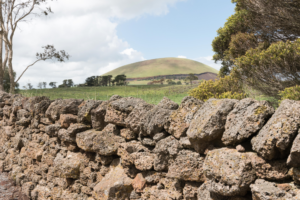
Making a drystone wall was a convenient way of using the stone when labour was cheap. The walls incidentally proved a barrier to the rabbits which one of the colonial squires, Tom Austin, helpfully introduced when releasing 13 wild rabbits onto his estate in 1859. Oh, what a legacy these stalwarts of Victorian Victoria unleashed upon our Land. Rabbits reminded him of the Old Country and he introduced foxes also, so he could have a bit of redcoat and jolly tally-ho-ing – the unspeakable in full pursuit of the uneatable, as Oscar Wilde termed fox hunting.
Convict transportation to Victoria ended in 1848 before the Gold Rush, and therefore convicts were not the only source of labour. The unsuccessful. prospector was another. Given that the Western District abutted the Goldfield area, it is not unsurprising that skilled Celtic wallers who moved South built more of the walls and also taught the landowners how to make them.
Australia’s stone walls are taller, thicker and deeper than elsewhere in the world. Local bluestone and scoria in addition to the honeycomb basalt were used and the walls reflect the desires of the owner, the purpose (varying sizes depending on whether controlling sheep or cattle with not unsurprisingly the tallest for personal glorification), the preferences of the wallers and the availability of rocks littering the paddocks.
Dry stone walls rely on selection and placement of stones, together with a combination of gravity and friction. “There is a place for every stone” – stones are not broken or chipped, although each is tapped with a hammer to make it “settle”.
Walls are best constructed with two men working on opposite sides. Typical freestanding drystone walls are built with “throughstones” crowned with copestones, the centre being filled with smaller stones and rubble, so-called “hearting”.
Much of the walls visible along the Hamilton Highway have fallen, a result of pulling out stones on the chase after rabbits, rubbing by cattle, or pressure from trees. But enough remain for the girls in their “turbo-charged billycart” to drive along – perhaps.
Memories of a Pastoralist
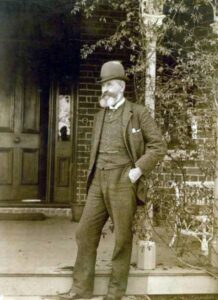
One of the most intriguing books I have ever read is “Old Melbourne Memories” written in 1884 by Rolf Boldrewood, the pseudonym of Thomas Alexander Browne, whose initial venture as a pastoralist is described in this book. This was in The Western District in what is now Victoria near Portland. It should be appreciated that although he started from Melbourne, the Portland area whither he was going had already been settled by Edward Henty a year earlier than that of the establishment Melbourne on Port Philip Bay.
Browne settled on Squattlesea Mere, as he described it “about 50,000 acres of ‘wood and wold,’ mere and marshland, hill and dale. It was all my own – after a fashion – that is, I had but to receive my squatting license, under the hand of the Governor of the Australias, for which I paid ten pounds, and no white man could in any way disturb, harass, or dispossess me.”
Westward were marshes; northward were what we know as “stony rises” where the cooled remains of lava flow “now matted with sward of kangaroo grass”, but the piles of scoria and rocks were too sharp to ride horses over them. South were green “luxuriant” plains able to sustain two or three thousand head of cattle. Against this mixed picture, he reported on the disputes between whitefella and blackfella. Most of this centred on the indigenous propensity for rustling, both cattle and sheep. After all, the blackfella had no concept of titles. It was not property in the English sense but their ancestral land, and any thing on blackfella land should be shared – simple communism.
This led to what Browne describes as the Eumeralla War, which was essentially a sporadic battle between spear and carbine. Browne initially built with his “men” a sod hut, and then a three-room split slab hut, probably plastered with mortar into which chopped grass or horse hair was packed. The roof was of stringy bark. A rude chimney enabled a fire to be set in the general living room which also served as the sleeping quarters for his stockmen.
A stockyard was built, enclosed by seven foot high walls, so tightly constructed that “a rat could not get through” – and robust enough that “a stampede of elephants” would be needed to level it. Browne mentions a number of property owners, without specific indication that they had built anything resembling his palisade.
As Browne wrote: “among the Rocks there were innumerable caves, depressions, and hiding-places of all kinds, in which the natives had been used to find secure retreat and safe hiding in days gone by. Whether they could not bear to surrender to the white man these cherished solitudes, or whether it was the shortsighted, childish anxiety to possess our goods and chattels, can hardly ever be told. Whatever the motive, it was sufficient, as on all sides at once came tales of wrong-doing and violence, of maimed and slaughtered stock, of homicide or murder.”
Thus, there was mayhem, with nightly incursions of the blackfellas in hit and run, taking stock if they could. The walled stockyards attested to defence in such a hostile environment.
One solution for the white settlers to quell the indigenous people was to use native mounted troopers armed with carbines; they proved a major determinant in the defeat and subjugation of the local blackfellas.
I was reminded of this by a recent episode of ABC’s Backroads, where they wheeled out in Tumut what seems to be the essence of modern Aboriginal elder, with a homely elderly face encircled by grey hair and beard which seamlessly seem to intersect. This vision of the peaceful Aboriginal jars against history which tells that the above troopers were recruited from the NSW border area in the early part of the 19th century, far away from the Aboriginals of the Western district.
So zealous were these troopers that they effectively subjugated the locals. Browne recalls being shown a bullet scar in the chest of an Aboriginal man who asserted that: “Police-blackfella ‘plenty kill him’” during that period, and on recovery immediately offered himself as a shepherd to one of the white landowners. “… being convinced that lawless proceedings were likely to bring him to a bad end.”
The concept of employing native troopers originated in Victoria but was quickly adopted in both NSW and Queensland; in Queensland in particular it seems an Aboriginal legacy about which there is selective amnesia. It is pity because much Aboriginal heritage implies a warrior class; and it seems that Aboriginals without cultural links to the locals were used as effective enforcement for subjugation of their fellow blackfellas.
I would like to know where this fits in the modern narrative, but are Aboriginal people prepared to discuss this part of blackfella history?
As a footnote, Browne wrote:
“The Aboriginal blacks on and near the western coast of Victoria – near Belfast, Warrnambool and Portland – had always been noted as a breed of savages by no means to be despised. They had been for untold generations accustomed to a dietary scale of exceptional liberality. The climate was temperate; the forest abounded in game; wild fowl at certain seasons were plentiful; while the sea supplied them with fish of all sorts and sizes, from a whale (stranded) to whitebait. No wonder that they were a fine race, physically and otherwise – the men tall and muscular, the women well-shaped and fairly good-looking.”
He respected the local Aboriginals as he went on to write – “grandly-formed specimens of humanity, dignified in manner, and possessing an intelligence by no means to be despised, comprehending a quick sense of humour, as well as a keenness of perception”.
But not a mention of cropping or organised horticulture. Browne was a perspicacious man. I’m sure he would have mentioned them if there had been any.
I believe that if there is an Aboriginal Voice, it should recognise its history, and not place it in some monochromatic rose-tinted light, selectively ignoring that Aboriginals may have been the first inhabitants, but one with many cultural differences, which led to some good and some bad consequences, Otherwise the Voice becomes one of Delusion.
Pooch, Have I got some Chocolate Fudge for You!
In the USA, National Dog Day is coming up Aug. 26, and The Boston Globe has identified some places for cool, sweet treats in Boston for both you, the dog owner(s) and your dog(s) to celebrate.
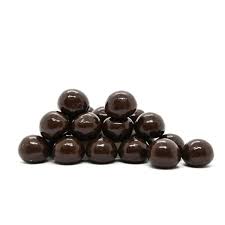
If you are into dark chocolate studded with macadamia nuts, you may initially allay the sweet tooth of the dog, but you have fed the dog a double whammy in terms of a death warrant. Muscle weakness in the hind legs is a sure sign of the pooch has been nibbling macadamia nuts. But chocolate, particularly cooking and dark chocolate, contains theobromine, which unlike us humans, dogs cannot metabolise and hence it builds to toxic levels.
Read further at your own risk! (Blog master)
“While it may be hard to resist your pet’s sweet, pleading face when he or she stares at your cone”, it is best to avoid lactose. However, here are the further American recommendations your dog (I refuse to use the words “four-legged friend”) can enjoy a cold treat, including specially made doggie ice creams.
That said, we found a few tail-waggers (God, more abhorrence!).
I am indebted to the Boston Globe for this further insight.
- THE BEN & JERRY’S TRUCK
Ben & Jerry’s Doggie Dessert Pop Culture Tour winding its way up the East Coast, hitting Gloucester Aug. 20-21. Find the treat truck at the dog-friendly Gloucester Waterfront Festival on Aug. 20 and 21.
- SCOOP SHOPS
You can also snag a scoop of Ben & Jerry’s at some of their brick-and-mortar area shops (Newbury Street, for example, has Doggie Desserts listed on their online menu) or pet stores for home freezing. Doggie Desserts come in two flavours: Rosie’s Batch made with pumpkin and mini cookies and Pontch’s Mix made with peanut butter and pretzel swirls.
- JB’S DOGGIE DELIGHTS (No, not me subtly advertising)

There’s also a local doggie ice cream truck: JB’s Doggie Delights serves Boston area pups. The hand-made treats are made with minimal ingredients, such as peanut butter and honey, and are safe for dogs’ sensitive stomachs. Track truck stops on Facebook or Instagram (sic).
- JP LICKS
A favourite Boston ice cream shop for humans also offers dairy-free pup-friendly treats. Next time you hit up one of JP Licks’ area locations for a cone of your own, order your dog a dairy-free Cow Paw, “a lightly flavoured peanut butter sorbet with a touch of honey served with a kosher dog bone.”
It sounds like a kids’ book, but The Bear & The Rat is actually a dog ice cream, made from frozen yogurt with prebiotics and digestive enzymes for doggy tummies. Your pet can enjoy flavours like bacon and peanut butter; banana and peanut butter, or pumpkin and cinnamon. In Boston, according to their site, you’ll find them at various Polkadog shops and Whole Foods among other spots.
- PUPPY SCOOPS & HOGGIN’ DOGS
Lactose-free Puppy Scoops, formulated for doggy digestion, comes in flavours like vanilla, peanut butter, and maple bacon. It’s in powdered form, so you can order online. Just add water, freeze, and let the tail-wagging begin. Ditto with Hoggin’ Dogs in flavours like cheese and banana. Both are made by Puppy Cake, as are Smart Scoops, “created for dogs that have sensitive tummies.” You might pair a scoop with cake to celebrate very good boys and girls on Aug. 26.
Can you imagine such treats being sold at The Annual Kelpie Muster at Casterton. Oh, I forgot, the Muster is in June – weather is a bit cold for JP Licks.
Therefore, one recommendation could be to move the Kelpie Muster to later in the year, so the burghers of The Western District can invest in Puppy Scoops or JP licks. After all, Australia did embrace KFC and McDonald’s, those toxic American invaders. So why deprive the dogs of American delights?
Yet you cry; “Surely Casterton, that centre of the Australian tradition would be immune from McDonald’s or KFC.”
Wrong – on both accounts! “Puppy Scoops” await.
You must have heard this from Prince Rupert
Golf has a predilection if you better par by one is to call it a birdie, two under par eagle, three under par albatross and four under par a condor. That is holing out in one on a par five hole, I understand has only been recorded five times.
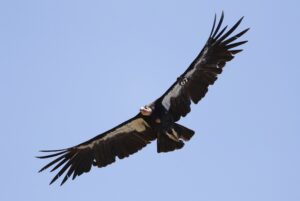
However, as the golf courses are stretching to par seven, a new bird as been introduced, an ostrich equivalent to five under par. Nobody has been recorded yet in achieving this unlikely target.
The longest drive? In 1974, 64 year old Mike Austin drove a 515 yard on a 450 yard par-4 using a steel-shafted, 43.5-inch persimmon driver and balata ball while competing in the U.S. National Seniors Open Championship at the Desert Rose Resort, Las Vegas. Both club and ball have been replaced by more technologically advanced equipment, but that day there was a hot following wind of 27 mph, and the golf course was at an altitude of 2,000 feet, which all helps.
But wait, there is more.
Carl Cooper had a disastrous start to the third hole of the 1992 Texas Open when he earned the unofficial longest drive ever. His blast towards the green bounced past the green, beyond the sixth tee, and eventually came to a stop behind the twelfth green. After the ball finally came to a halt, it had travelled 787 yards, but not on the one hole.
So given the right conditions anything can happen in golf – even an ostrich from the sand.
Mouse Whisper
Australia’s official war historian, C.E.W. Bean, who wrote of Monash as a “pushy Jew”, and Rupert Murdoch’s father, Keith Murdoch, conspired during the war to try to prevent Monash winning the active command of Australian forces on the Western Front. Murdoch later opposed Monash’s efforts to build the Shrine of Remembrance in Melbourne – Tony Wright.
Over to you yon Keith Murdoch hagiographer Eric Beecher! Oh, from the mouse that whispered.
